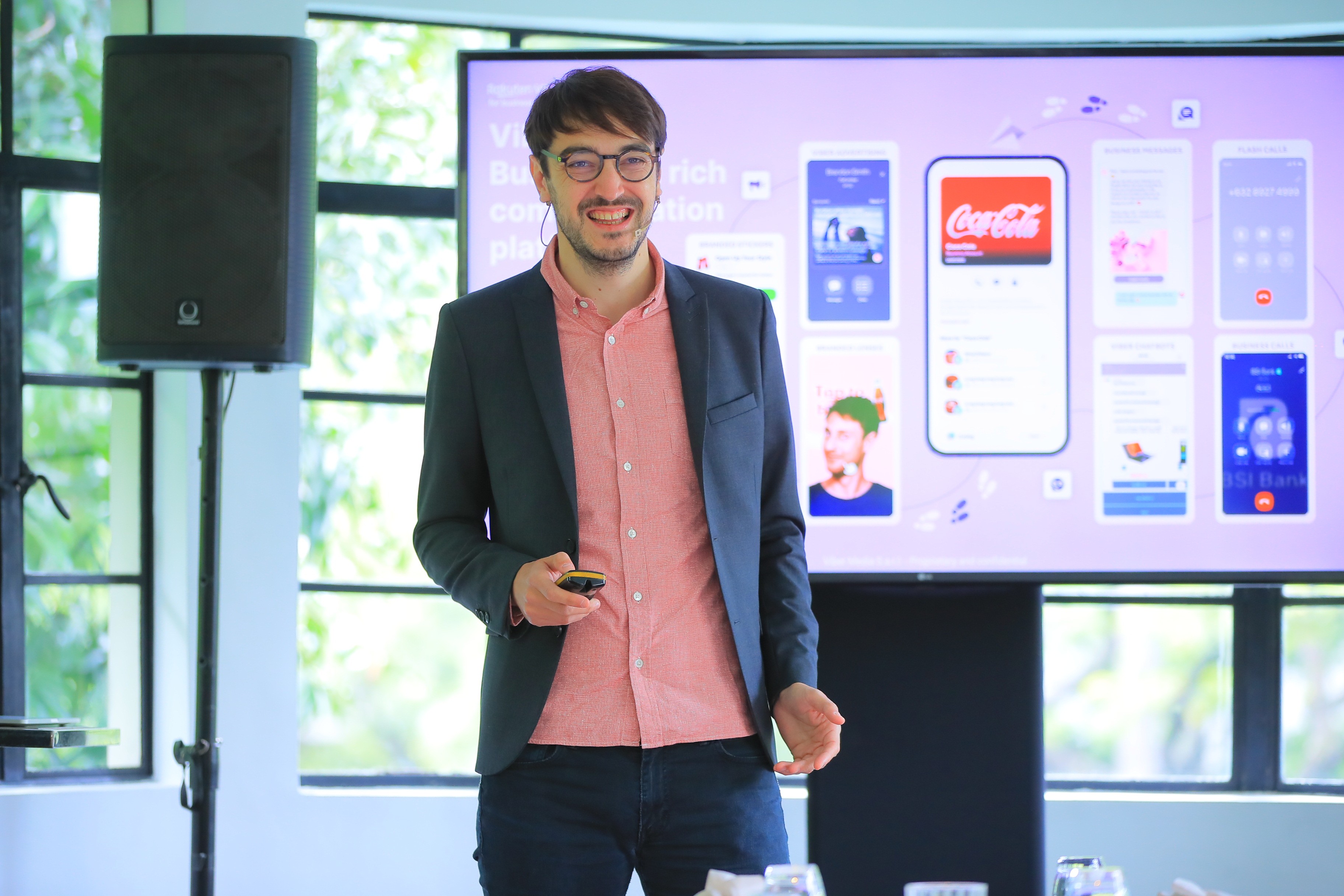How Viber is shaping the future of messaging and conversational commerce
Rakuten Viber executives recently discussed how the communications platform is shaping the future of conversational commerce.

On June 30, Rakuten Viber led by its Chief Revenue Officer Cristina Constandache, Global Sales & B2B Marketing Senior Director Etienne Dupont, and Senior Messaging Partnership Manager Berina Tanovic gathered at the iconic Blackbird in Makati City with local partners, brands, and members of the press to discuss how the communications platform is shaping the future of conversational commerce. They presented how c-commerce remains to become an important business and marketing tool in the post-pandemic world, especially in the Philippines, which is one of the app’s key growth markets in the Asia Pacific (APAC) region.
The future of conversational commerce starts here
For the past few years, brands both big and small have witnessed the phenomenal rise of conversational commerce or what they called c-commerce, particularly at the height of the lockdowns brought by the COVID-19 pandemic. Accessible and convenient, conversational commerce allows any brand to quickly respond to their customers’ needs in a way that’s more natural and personal. Now that borders and markets are opening up, it’s a good time to examine how consumers and businesses can continue to maximize the advantages of c-commerce.
Based on the data collected from January to May 2022 versus the same period in 2021, Viber stressed that there has been a 123% growth in its conversational business messages, proving that business messages are emerging to become a vital fixture in business plans. In the Philippines, 51% of the top brands that are using Viber Business Messages come from finance, 27%—from retail, 10%—from hospitality and travel, 6%—from telecommunications and IT, 3%—from health and insurance, and another 3%—from logistics.
At the same time, Cristina Constandache in her presentation underlined that Filipinos remain to be avid social media and app users, spending online through their mobile at an average of 5 hours and 47 minutes. But brands should also keep in mind that 69% of APAC consumers including Filipinos prefer using mobile messaging for customer service. She also pointed out that 3.1X increase in user lifetimes among APAC brands that engage customers via a mobile communication channel, allowing them to move customers down the funnel.
Viber for Business solutions for seamless brand-user communications
A global leader in messaging communication that has become a go-to platform where people come to connect with family, friends, and colleagues—and this time, with brands too, Viber is offering a suite of business solutions for seamless brand-user communications. Etienne Dupont highlighted certain Viber solutions for each point in a marketing funnel. Viber offers branded Stickers and Lenses, Viber Ads, Business Messages, Chatbots and Flash calls with Business calls that will be launched soon that help to build awareness, consideration, conversion and loyalty.
He also emphasized the role and practical use cases of Viber messaging solutions for brands in offering a more personalized interaction with customers in every touchpoint. Viber Business Messages can help brands manage bookings, orders, and deliveries, and even provide post-sales support and collect feedback. What’s even great about this c-commerce tool is that it allows two-way conversations and enhance their chats by allowing brands and users to exchange files, photos, and videos.
Etienne Dupont also explained how Chatbots can benefit brands, especially now that 82% of consumers expect immediate response on their queries. With Chatbots that’s also offered by Viber, brands now can provide their customers with an elevated automated messaging service that’s available 24/7, offering more perks like opportunities to shop and pay for items right within a single app.
How brands succeed with Viber for Business
Berina Tanovic then presented success stories of brands that trusted Viber’s business solutions. One of these includes Philippine-based QuadX that specializes in digital logistics and e-commerce fulfillment and payments. Recently, they launched a new opportunity called ShippingCart Plus, for subscribers to have a chat with a Personal Account Manager via Viber’s conversational business messages. The messaging solution is provided by the trusted Viber partner Promotexter. Like a concierge, users can ask live agents for sale alerts, shopping advice, follow-up shipments, special handling, etc. This responds to the study that says 74% customers prefer messaging with businesses if a real person is responding. As a result, ShippingCart has 100% customer satisfaction.
Another successful example is the Primer Group of Companies which wanted to provide an alternative and safer avenue for customers to buy essentials during the pandemic. With the help of Viber’s official partner Infobip, they enabled online purchases with digital vouchers using codes with discounts sent through Viber Business Messages. The results were quite telling: the brand achieved a 53% code redemption conversion rate, and a 401% uptick in total sales.
And the possibilities for brands and users are limitless, especially with Viber’s long-term vision to become a super-app, a single gateway to multiple services, as Cristina Constandache pointed out.
“Today people no longer want to use apps for different needs separately. On average, app users spend 77% of their time on their top 3 apps, and almost half of their time in one single app. People nowadays seek one gateway to many options in one place,—says Cristina Constandache, Chief Revenue Officer at Rakuten Viber.—Viber’s long-term goals for consumers and for brands form a single all-encompassing strategy of becoming a super-app: to maximize utility of the app for the user base, so that consumers could solve as many tasks as possible without leaving the comfort of the app—and to allow brands to reach their audience at each stage of the customer journey”.



